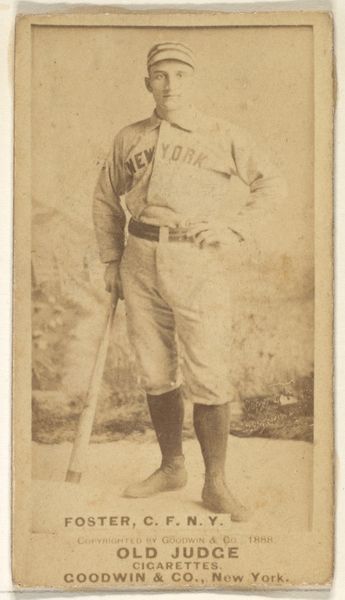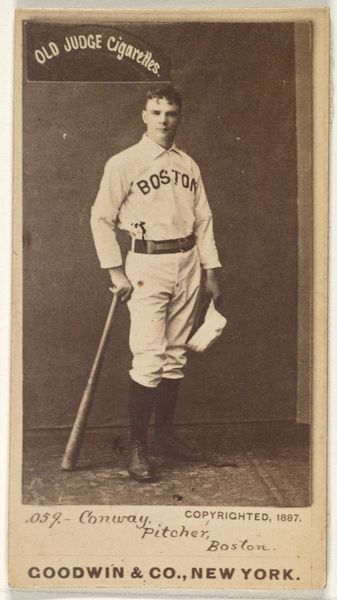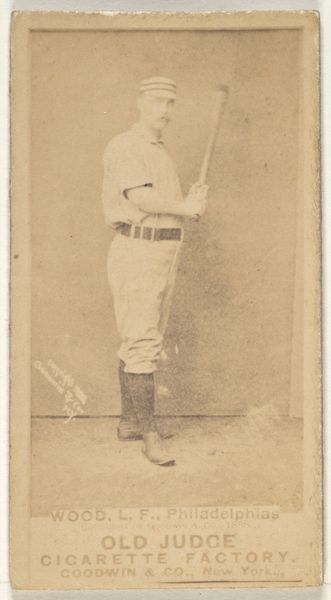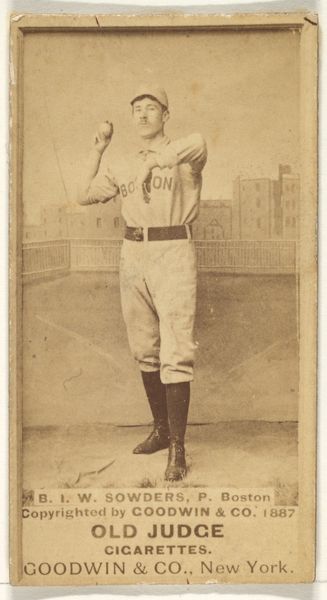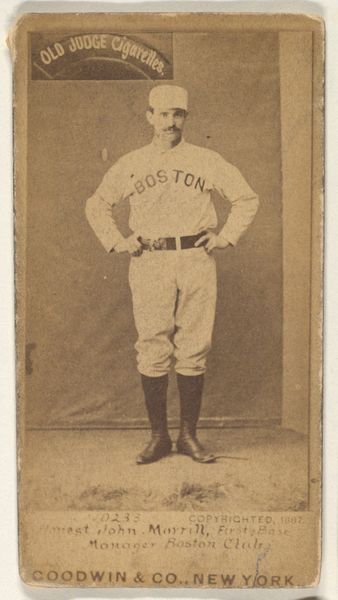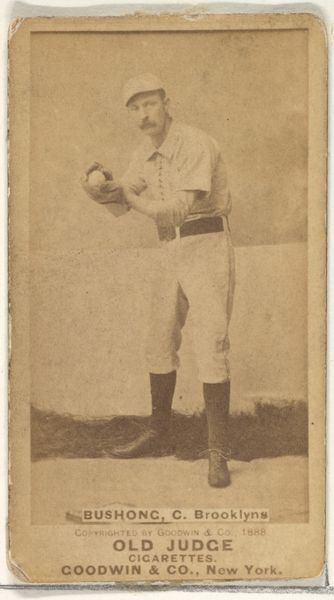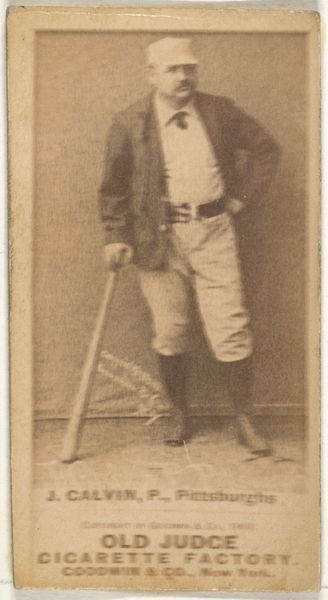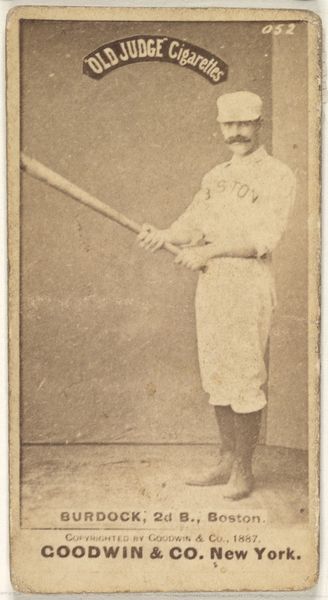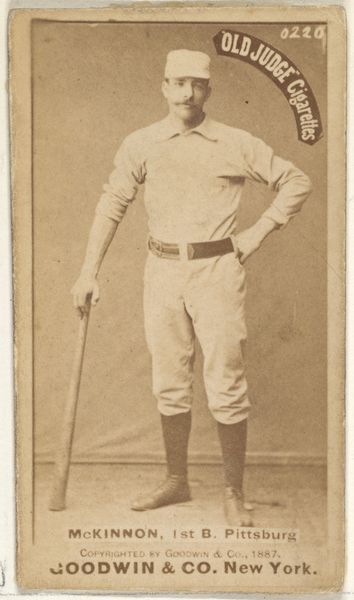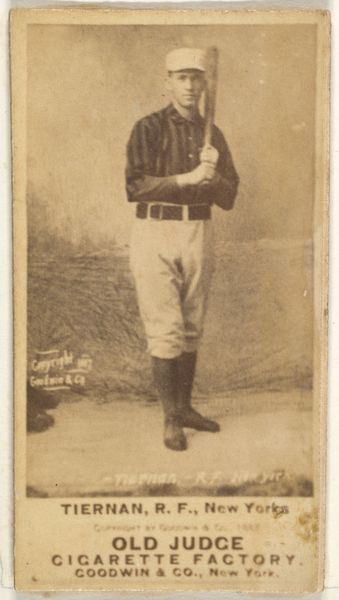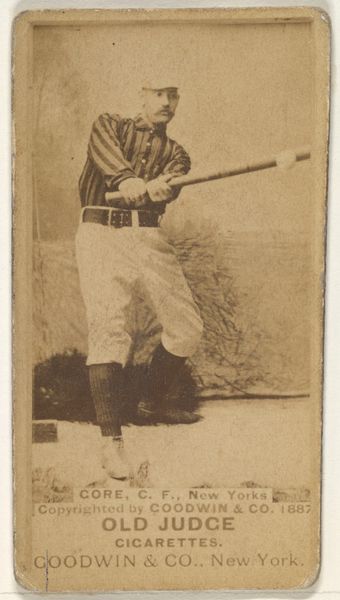
Burdock, 2nd Base, Boston, from the Old Judge series (N172) for Old Judge Cigarettes 1887
0:00
0:00
drawing, print, photography
#
portrait
#
drawing
# print
#
baseball
#
figuration
#
photography
#
genre-painting
Dimensions: sheet: 2 11/16 x 1 3/8 in. (6.9 x 3.5 cm)
Copyright: Public Domain
Curator: Up next we have a very early baseball card. It’s a portrait of Burdock, 2nd Base, Boston, from the Old Judge series created in 1887 by Goodwin & Company. These cards were originally included in packages of Old Judge Cigarettes. Editor: It has a sepia tint, almost like a memory fading into time. The player, Burdock, has a firm stance. He's not smiling. Serious business. I’m sensing a tension here—between athleticism and commercialism. Curator: Absolutely. These cards highlight the intersection of burgeoning sports culture and aggressive marketing. Think about it: cigarettes appealing to fans through images of athletic prowess. We should also acknowledge that baseball itself, at this time, wasn’t free from the social stratifications of race and class. Editor: Right. It’s fascinating how seemingly simple portraits carry those implicit narratives of labor, consumption, and leisure in 1880s America. How tobacco companies are trying to attach themselves to an all-American symbol. Who gets to be on these cards and who doesn't is a power dynamic. Curator: And these cards circulated widely, reinforcing cultural values tied to both the sport and the act of consumption. Consider too, how the visual aesthetic, the sepia tone as you mentioned, created a nostalgic feel even then. It linked the present moment to an idealized past. Editor: Looking at this card, the "Old Judge Cigarettes" signage placed prominently above Burdock feels quite blunt by contemporary standards, there isn’t a huge interest in nuance here, that brand visibility comes before anything else. How does that open a wider conversation about sponsorship, gender, or racial considerations at the time? I'm also curious about what we can discover by researching more on Goodwin & Co. Curator: By examining such ephemera like these, we glean valuable insights into the ways images worked—and continue to work—to shape perceptions and normalize ideologies. It's much more than just a baseball card. Editor: Agreed. There is more at stake here than a single baseball portrait and thinking more critically helps to expose social power dynamics and contextual assumptions that impact visual art.
Comments
No comments
Be the first to comment and join the conversation on the ultimate creative platform.
